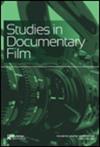New species of Labiobulura (Nematoda: Ascaridida), and Dorcopsinema and Paralabiostrongylus (Nematoda: Strongylida) from Dorcopsis muelleri (Macropodidae) from Lengguru, West Papua, Indonesia
IF 0.8
4区 综合性期刊
Q3 MULTIDISCIPLINARY SCIENCES
Transactions of the Royal Society of South Australia
Pub Date : 2018-01-02
DOI:10.1080/03721426.2018.1427414
引用次数: 0
Abstract
ABSTRACT A new species of the Subuluridae (Nematoda: Ascaridida) Labiobulura lengguruensis n. sp. is described from the caecum and colon and two new species of the Chabertiidae: Cloacininae (Nematoda: Strongylida) Paralabiostrongylus tuberis n. sp. and Dorcopsinema amplum n. sp. are described from the stomachof the macropodid marsupial Dorcopsis muelleri (Lesson, 1827) (Mammalia: Macropodidae) in Papua Indonesia. Labiobulura lengguruensis differs from all congeners in having a simple denticle associated with each labial lobe of the buccal capsule. Paralabiostrongylus tuberis can be distinguished from its congeners in by the position of the deirid and the form of the dorsal ray and genital cone. Dorcopsinema amplum can be distinguished from its congeners by the length of the spicule, the morphology of the appendages on the ventral lip of the genital cone, the position of the lateral branches of the dorsal ray, the shape of the female tail, the morphology of the vagina and the size of the eggs.The known nematode fauna of D. muelleri is summarised. The finding of three species of Dorcopsinema each in a different geographical locality suggests the possibility of allopatric speciation. A revised key to the species of Dorcopsinema is given.摘要在印度尼西亚的大足类有袋动物Dorcopsis muelleri (Lesson, 1827)(哺乳动物:大足科)的胃中发现了一新种(线虫纲:蛔虫纲)长唇虫(Labiobulura lengguruensis n. sp.)和二新种:Cloacininae(线虫纲:圆线虫纲)。在唇囊的唇叶上有一个简单的小齿,与所有的同类不同。结节旁圆线虫可以从它的同类中区分出来,从它的脊线的位置和背线和生殖锥的形式。从针状体的长度、生殖锥腹唇上附属物的形态、背射线侧支的位置、雌性尾巴的形状、阴道的形态和卵的大小,都可以将其与同类区分开来。总结了已知的木氏线虫区系。在不同的地理位置发现了三种Dorcopsinema,表明可能存在异域物种形成。给出了Dorcopsinema的一种修订的键。
本文章由计算机程序翻译,如有差异,请以英文原文为准。
求助全文
约1分钟内获得全文
求助全文
来源期刊
CiteScore
1.40
自引率
12.50%
发文量
17
审稿时长
>12 weeks
期刊介绍:
Published since 1880, the Transactions of the Royal Society of South Australia is a multidisciplinary journal that aims to publish high quality, peer-reviewed papers of particular relevance to Australasia.
There is a particular focus on natural history topics such as: botany, zoology, geology, geomorphology, palaeontology, meteorology, geophysics, biophysics, soil science and environmental science, and environmental health. However, the journal is not restricted to these fields, with papers concerning epidemiology, ethnology, anthropology, linguistics, and the history of science and exploration also welcomed.
Submissions are welcome from all authors, and membership of the Royal Society of South Australia is not required.
The following types of manuscripts are welcome: Reviews, Original Research Papers, History of Science and Exploration, Brief Communications, Obituaries.

 求助内容:
求助内容: 应助结果提醒方式:
应助结果提醒方式:


